OAB Hydration Calculator & Tracker
Personalized Hydration Plan
Calculate your ideal daily water intake and track your fluid consumption to manage overactive bladder symptoms effectively.
Input Your Details
Fluid Tracker
Your personalized hydration plan will appear here after calculation
When you’ve got an overactive bladder, the urge to run to the bathroom can feel relentless. Many people assume the answer is to drink less, but the relationship between fluids and bladder symptoms is more nuanced. Proper overactive bladder hydration can actually calm the bladder, reduce irritation, and improve overall urinary control-if you get the amount and timing right.
Key Takeaways
- Hydration supports bladder health by diluting irritants and maintaining normal urine volume.
- Both too little and too much fluid can worsen OAB symptoms.
- Tailored fluid‑intake guidelines (about 1.5-2L of water daily for most adults) work best when combined with timed drinking and bladder‑training techniques.
- Caffeinated and alcoholic beverages act as bladder irritants and should be limited.
- Tracking intake with a 24‑hour fluid chart helps you find the sweet spot for your body.
Understanding Overactive Bladder
Overactive Bladder (OAB) is a condition characterized by sudden urges to urinate, frequent urination, and sometimes urge incontinence. It affects roughly 16% of adults, with prevalence rising after age50. The bladder muscles contract involuntarily, sending signals to the brain that it’s time to empty-even when the bladder isn’t full.
Common triggers include bladder irritants (caffeine, alcohol, spicy foods), high‑pressure intra‑abdominal activities, and certain medications. While prescription drugs like anticholinergics can help, lifestyle tweaks-especially fluid management-often deliver noticeable relief without side effects.
How Hydration Influences Bladder Function
Hydration the process of maintaining adequate fluid balance in the body does more than keep you from feeling thirsty. Water dilutes urinary solutes such as urea, potassium, and especially bladder irritants like caffeine metabolites. Diluted urine is less likely to trigger the sensory nerves that signal urgency.
On the flip side, severe dehydration concentrates urine, making it acidic and irritating the bladder lining. This irritation can lead to increased bladder muscle activity-the very problem OAB patients want to avoid.
Finding the Right Fluid Amount
There’s no one‑size‑fits‑all prescription, but research and clinical guidelines point toward a moderate range. For most healthy adults, aiming for 1.5-2liters (about 6-8 cups) of plain water per day balances the benefits of dilution with the risk of over‑filling the bladder.
Factors that shift the sweet spot include:
- Body size and weight (larger individuals need more fluid).
- Physical activity level (sweat loss adds to fluid needs).
- Climate-hot, dry weather increases fluid loss.
- Medical conditions such as diabetes or heart failure, which may require tailored limits.
When you’re first adjusting, track your intake for a week using a 24‑hour Fluid Chart a simple log of every beverage and its volume. Note the times you feel urgency, the amount you drank before the episode, and any foods that might have contributed. After a few days you’ll spot patterns-perhaps you’re sipping a large coffee at 3p.m. that triggers a bathroom run an hour later.
What to Drink (and What to Skip)
Not all fluids affect the bladder equally. Below is a quick comparison of common beverages and their typical impact on OAB symptoms.
| Fluid | Typical Volume (per serving) | Irritation Rating* (1=low, 5=high) | Notes |
|---|---|---|---|
| Water | 8oz (240ml) | 1 | Best for dilution; no caffeine or alcohol. |
| Herbal tea (caffeine‑free) | 8oz | 2 | Warm liquids can relax bladder muscles; avoid added sugar. |
| Black coffee | 8oz | 4 | Contains caffeine; may increase urgency. |
| Energy drink | 8oz | 5 | High caffeine + sugar; strong irritant. |
| Alcoholic beer | 12oz | 4 | Diuretic effect; can overstimulate bladder. |
| Fruit juice (orange) | 8oz | 3 | Acidic; moderate consumption okay. |
*Rating based on clinical observations and patient surveys.
Practical rule: prioritize water and caffeine‑free herbal teas, limit coffee to one small cup and keep alcoholic drinks to occasional, low‑volume servings.
Common Myths About Fluid Restriction
Myth #1: "Drink less, and the bladder will calm down." In reality, severe restriction leads to concentrated urine that irritates the bladder lining, often worsening urgency.
Myth #2: "All fluids are the same." The caffeine and alcohol content dramatically changes how a beverage affects bladder signaling.
Myth #3: "You can’t drink water if you have OAB." Controlled, evenly spaced water intake actually reduces sudden urge spikes by keeping the bladder volume stable throughout the day.
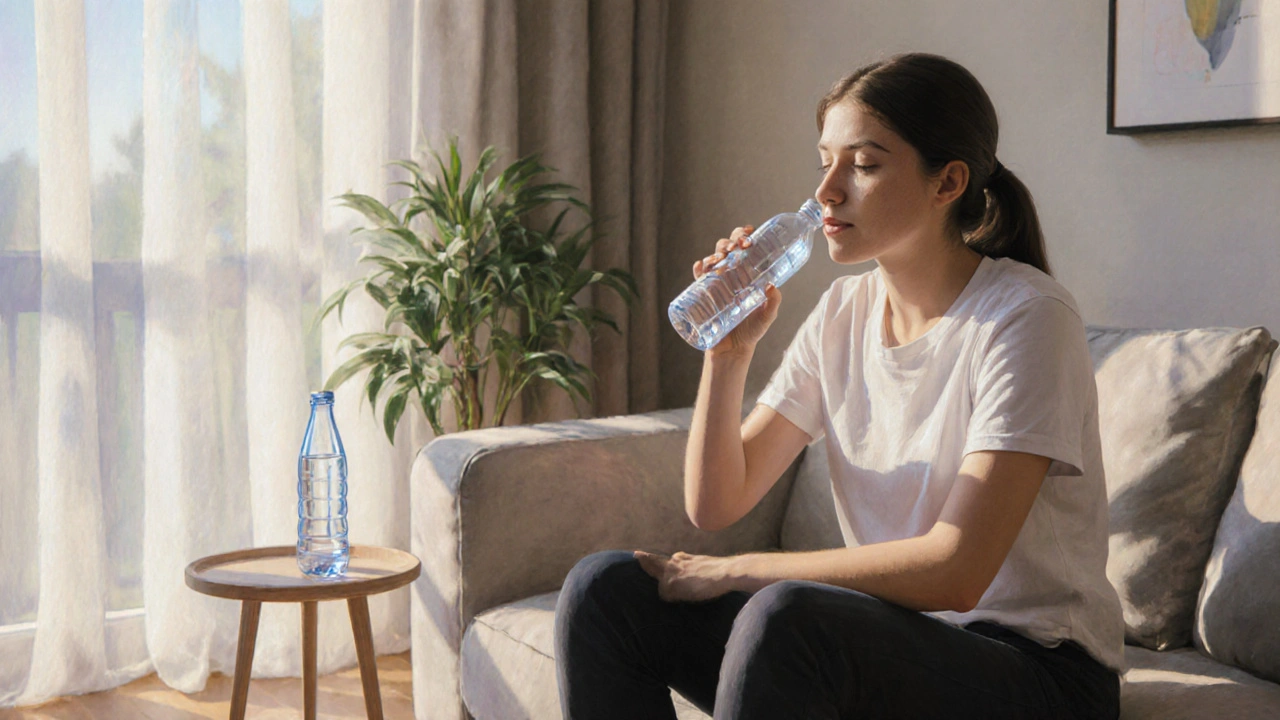
Practical Hydration Strategies
Here’s a step‑by‑step plan you can start today:
- Calculate a baseline: aim for 1.5L of water daily (about 6 cups).
- Divide the total into 2‑hour windows. For an 8‑hour waking period, that’s roughly 250ml (1 cup) every 2hours.
- Replace high‑irritant drinks with water or herbal tea during those windows.
- Keep a small bottle handy. Sip slowly rather than gulping.
- Log each drink in your 24‑hour Fluid Chart, noting time and any urgency you feel within the next hour.
- After a week, adjust: if urgency spikes after a specific time, shift the drink to an earlier window.
Combine this with Pelvic Floor Exercises targeted contractions that strengthen the muscles controlling urine flow. Stronger muscles can hold a fuller bladder longer, giving you more flexibility with fluid timing.
If medication is part of your regimen, be aware of Anticholinergic Medications drugs that reduce bladder muscle overactivity. They can cause dry mouth, prompting you to drink more than necessary. Pair them with a disciplined drinking schedule to avoid over‑hydration.
When to Seek Professional Guidance
If you notice any of the following, schedule a urology or pelvic health appointment:
- Sudden increase in nighttime trips (nocturia) despite controlled fluid intake.
- Blood in urine or foul odor, which may signal infection.
- Persistent urgency that interferes with work or social activities despite following the hydration plan.
A clinician can run a urine analysis, evaluate bladder capacity with cystometry, and adjust any prescription meds.
Quick Reference Checklist
- Aim for 1.5-2L of water daily.
- Spread intake evenly across waking hours.
- Limit caffeine to ≤1 cup (8oz) per day.
- Restrict alcohol to ≤1 standard drink on occasion.
- Log everything in a 24‑hour Fluid Chart.
- Practice pelvic floor exercises 3times daily.
- Review symptoms with a healthcare provider if problems persist.
Frequently Asked Questions
Can I drink water right before bed?
A small glass (about 4oz) is fine if you’re thirsty, but avoid large volumes within the last hour to reduce nighttime trips.
Is sparkling water okay for OAB?
Yes, as long as it’s plain and caffeine‑free. Carbonation can sometimes cause a feeling of fullness, so listen to your bladder’s response.
How long does it take to see improvement after changing my fluid habits?
Most people notice a reduction in urgency within 2-4weeks if they stick to a consistent schedule and combine it with bladder‑training exercises.
Do diet drinks affect OAB?
Artificial sweeteners can be irritants for some individuals. Try eliminating them for a week to gauge any changes.
Should I stop all caffeine if I have OAB?
Not necessarily. Many patients tolerate a single small cup of coffee daily. The key is moderation and timing-preferably early in the day.

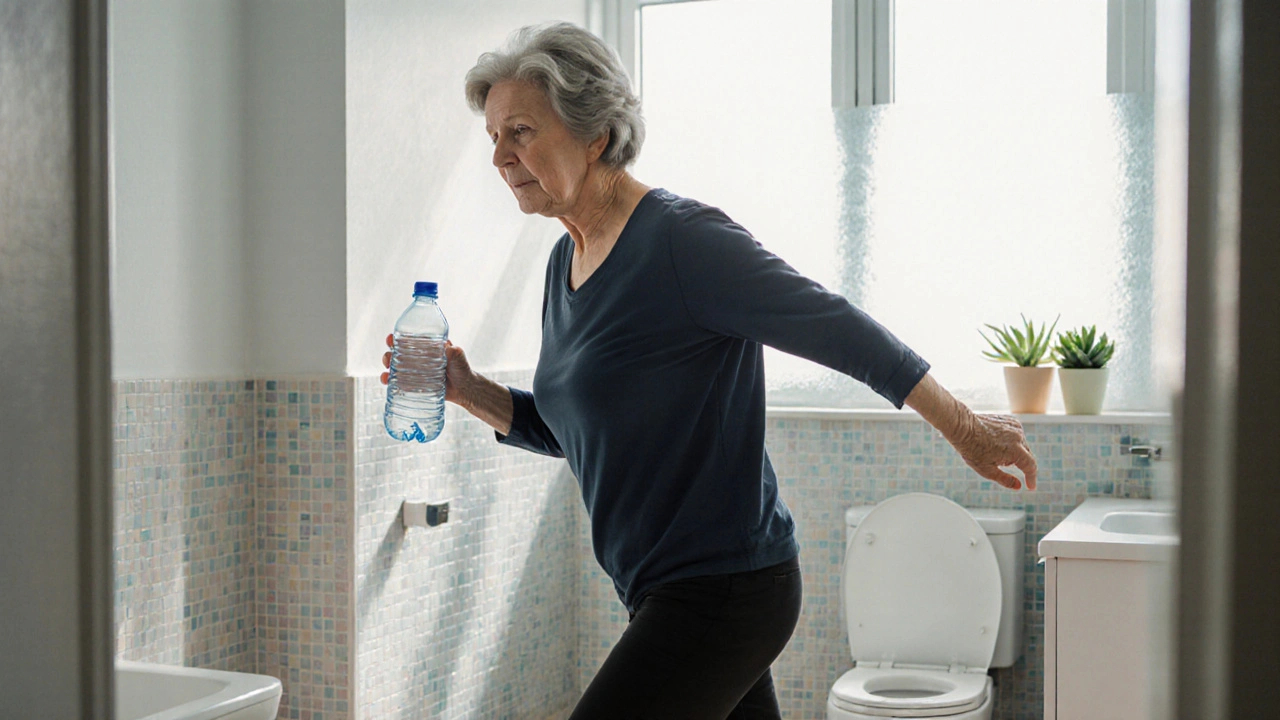
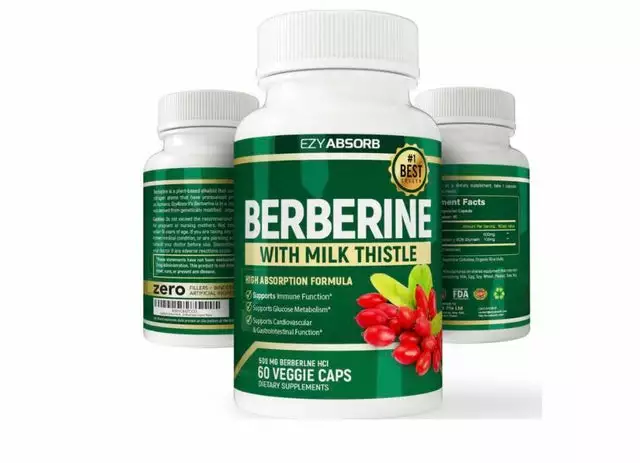

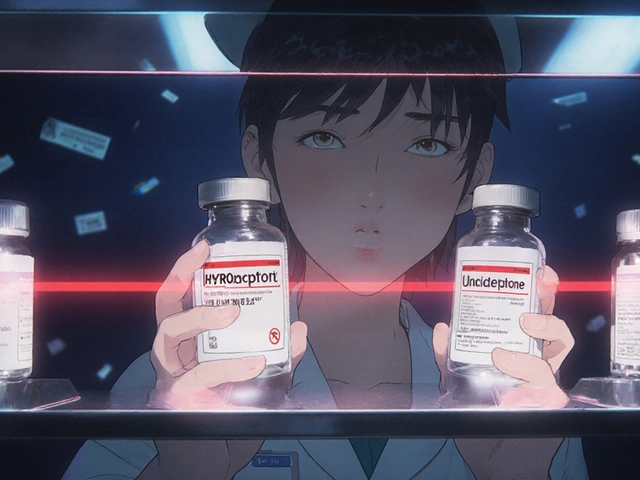
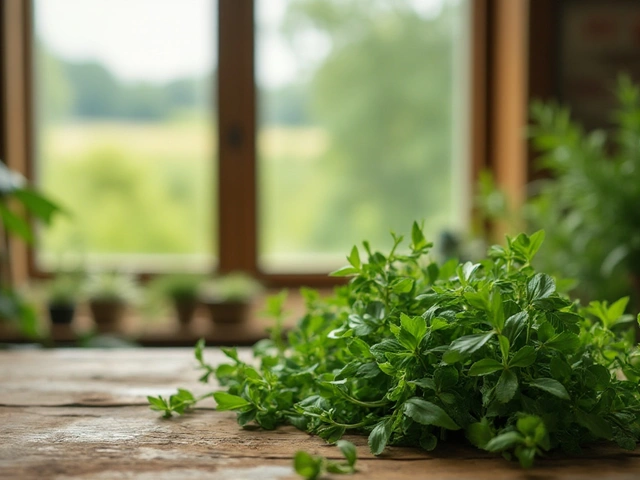
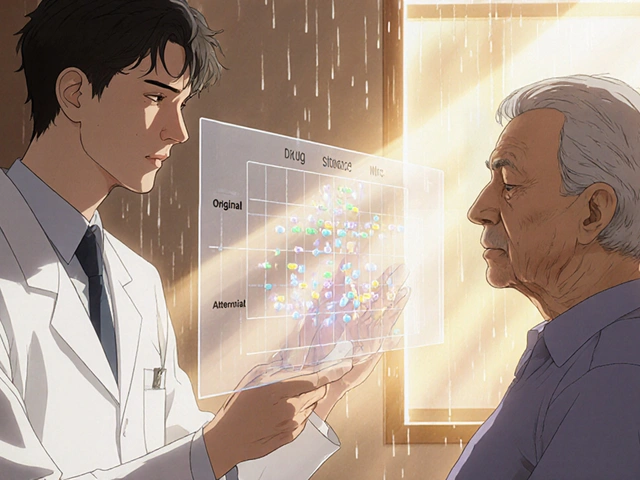
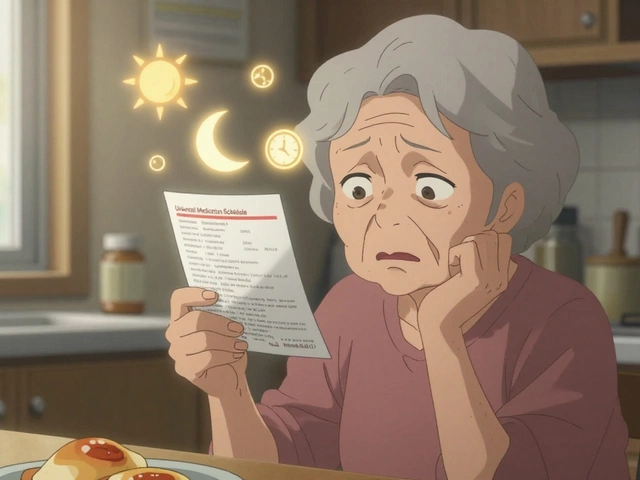
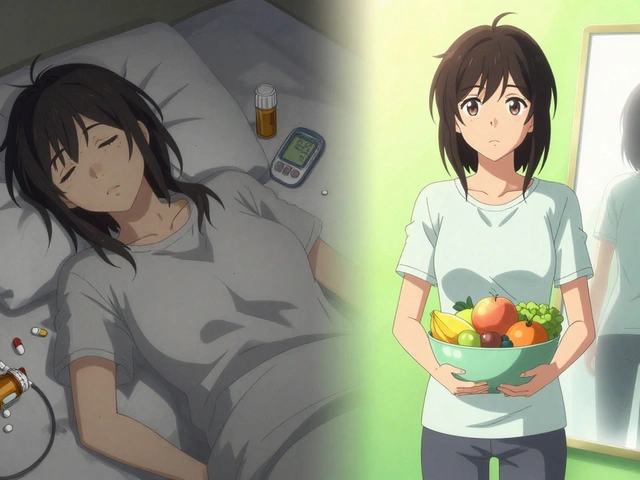
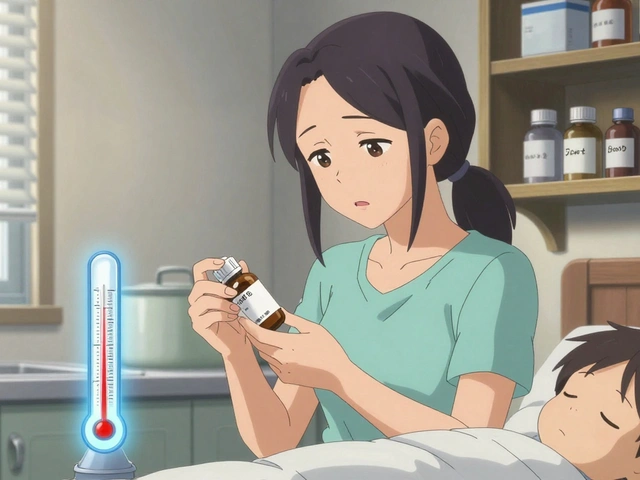
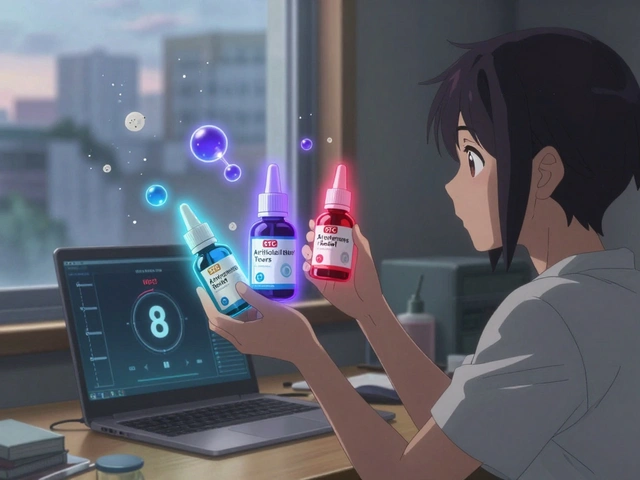
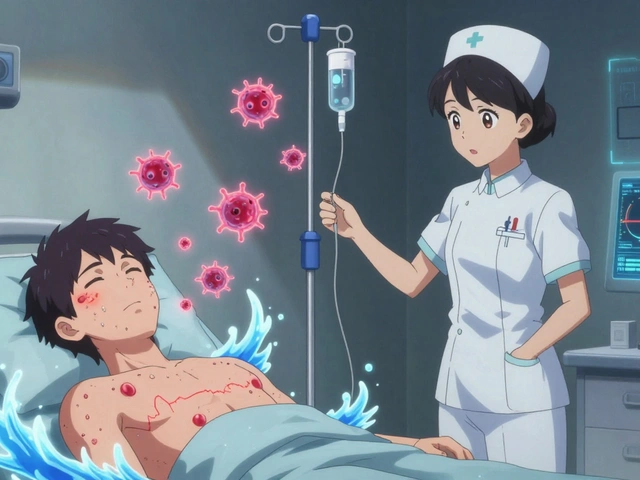
Heather Jackson
October 14, 2025 AT 14:40 PMHonestly, I feel like I’m drowning in a sea of advice, but here’s the thing – you cant just chug water like it’s a soda binge and expect miracles. Your bladder craves balance, not a tsunami.
Akshay Pure
October 14, 2025 AT 16:53 PMOne must appreciate that the intricacies of osmotic regulation transcend mere anecdote; the physiological paradigm demands quantifiable metrics rather than whimsical conjecture.
Steven Macy
October 14, 2025 AT 18:16 PMHydration, when approached with mindful intentionality, becomes a cornerstone of bladder homeostasis.
The bladder, a smooth muscle organ, responds not merely to volume but to the chemical composition of the urine.
When fluid intake is excessively restricted, solute concentration rises, rendering the urine more acidic and provocative.
Conversely, overabundant intake can exceed the bladder's receptive capacity, precipitating frequent voiding episodes.
Thus, the therapeutic sweet spot resides in a calibrated range tailored to the individual's physiology.
Body mass index, metabolic rate, and ambient temperature all inform the optimal daily water quota.
A pragmatic approach involves partitioning the recommended volume into evenly spaced consumptions throughout waking hours.
Such distribution stabilizes intravesical pressure and diminishes abrupt urge sensations.
Empirical studies have demonstrated that patients who adhere to a structured fluid schedule report a reduction in urgency episodes by up to thirty percent.
Moreover, coupling this regimen with pelvic floor strengthening exercises synergistically augments bladder control.
It is also prudent to scrutinize beverage choice, privileging low‑irritant fluids such as plain water and herbal teas.
Caffeinated or alcoholic beverages introduce neurochemical stimulants that can exacerbate detrusor overactivity.
A simple 24‑hour fluid log can illuminate hidden patterns, such as a nocturnal coffee habit that precipitates nighttime trips.
By iteratively refining the timing and type of intake, patients can gradually desensitize the bladder's hyper‑reactivity.
In essence, mindful hydration transforms from a trivial habit into a therapeutic modality that respects both the body's fluid needs and the bladder's functional limits.
Matt Stone
October 14, 2025 AT 19:40 PMStop overthinking this drink schedule it works simple just sip regular
Joy Luca
October 14, 2025 AT 21:03 PMImplementing a volumetric intake algorithm calibrated to renal excretion kinetics yields optimal bladder compliance whilst mitigating hyperosmolar irritants
Jessica Martins
October 14, 2025 AT 22:26 PMThe suggestion to adopt a calibrated algorithm is sound, provided it aligns with individual daily activity and comorbid conditions.
Doug Farley
October 14, 2025 AT 23:50 PMOh sure, because everyone has time to log every sip like they're running a chemistry lab in their kitchen.
Scott Davis
October 15, 2025 AT 01:13 AMJust keep a bottle handy.
Calvin Smith
October 15, 2025 AT 02:36 AMImagine your bladder as a drama queen demanding a perfectly timed encore of hydration – spoiler: it’ll quit the theatrics if you stop over‑feeding the audience.
Alex Feseto
October 15, 2025 AT 04:00 AMIn conclusion, adherence to the stipulated volumetric parameters, coupled with judicious avoidance of known irritants, constitutes the most efficacious praxis for mitigating overactive bladder symptomatology.